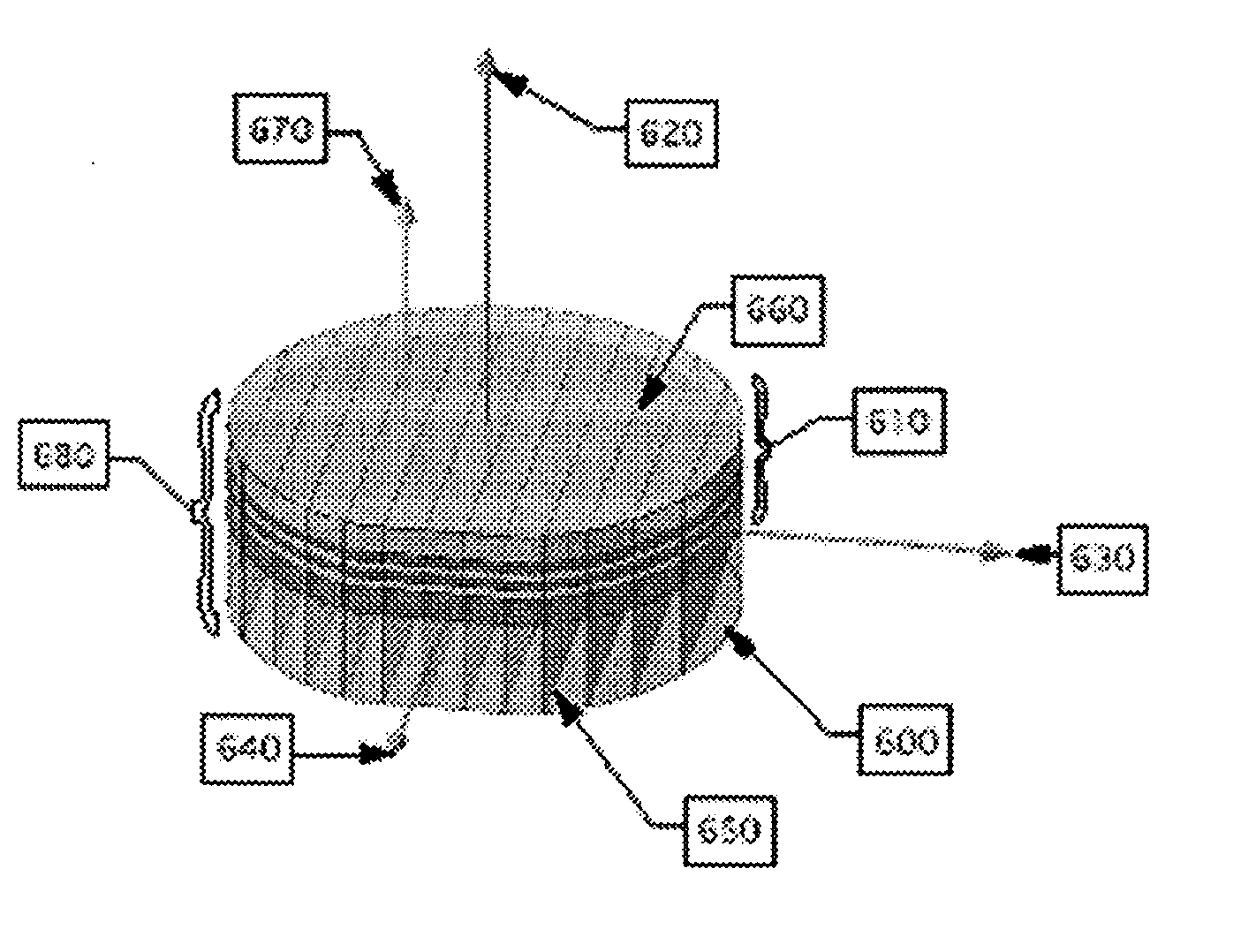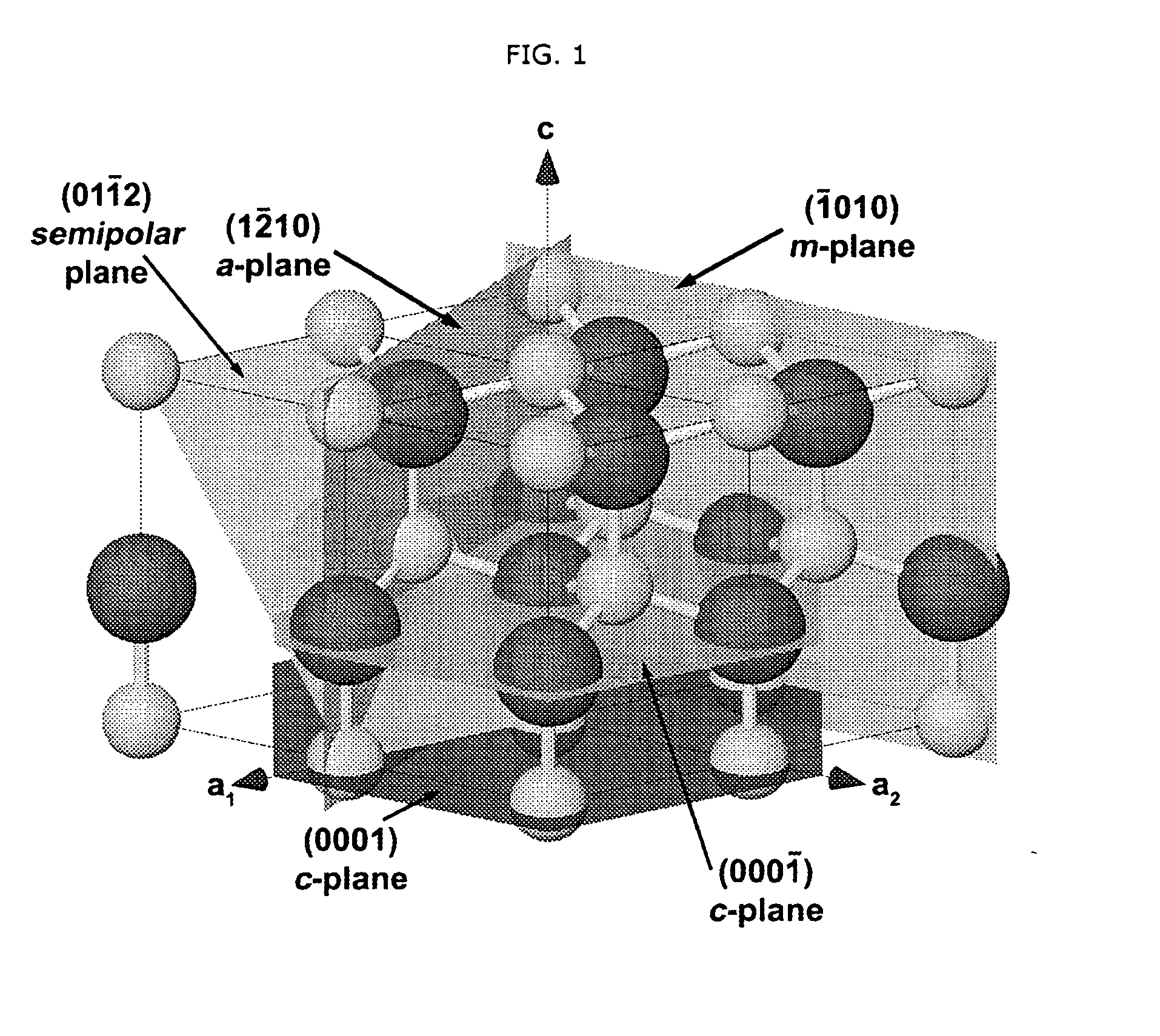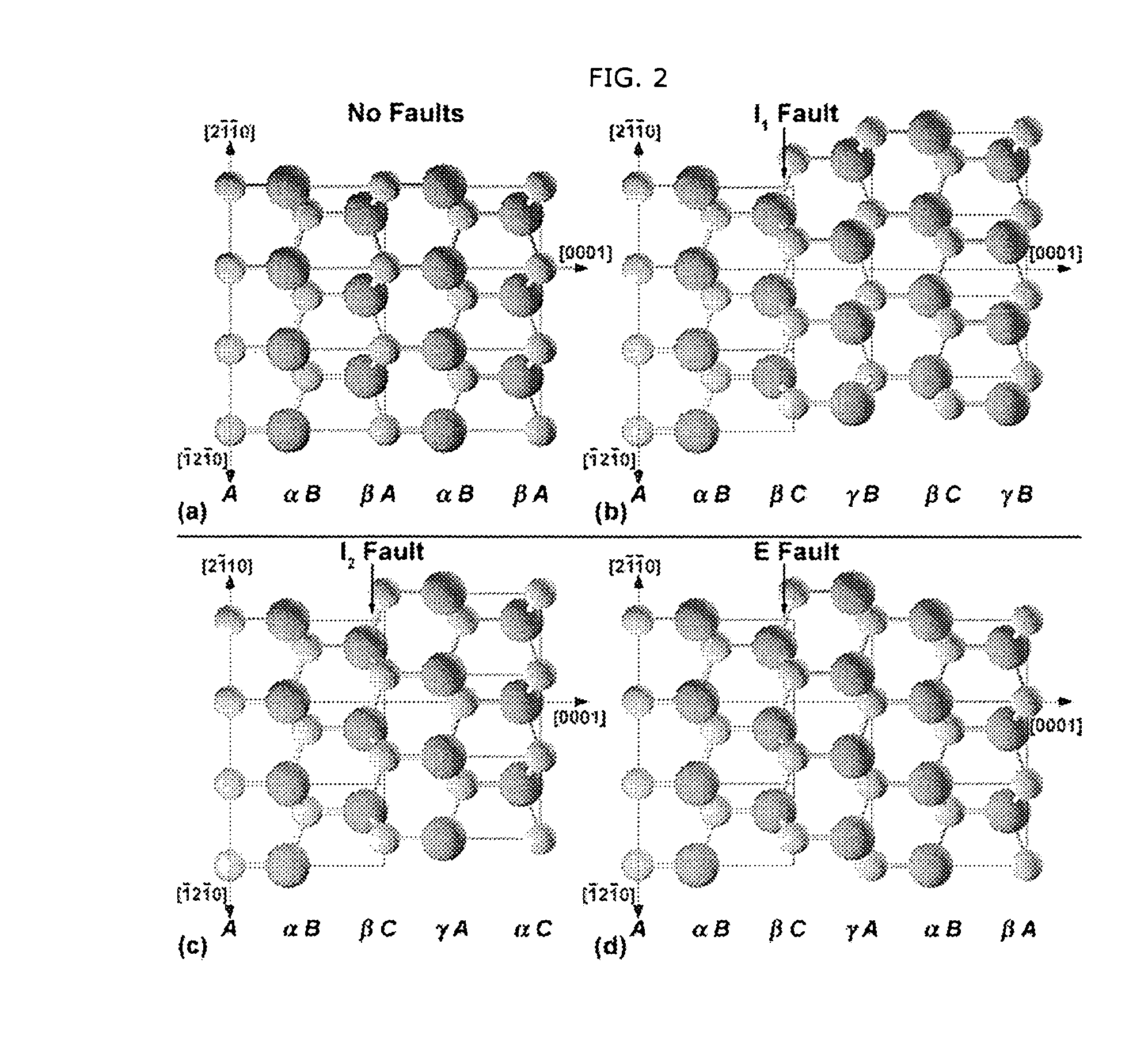Nitride substrates, thin films, heterostructures and devices for enhanced performance, and methods of making the same
a technology of nitride semiconductors and substrates, applied in the direction of crystal growth process, polycrystalline material growth, chemically reactive gases, etc., can solve the problems of nitride semiconductor devices that cannot meet achieve the theoretical performance potential, remain too fragile, and too expensive for high-power commercial and consumer use. , to achieve the effect of enhancing electrical efficiency, reducing the density of thread dislocations, and enhancing carrier mobility
- Summary
- Abstract
- Description
- Claims
- Application Information
AI Technical Summary
Benefits of technology
Problems solved by technology
Method used
Image
Examples
Embodiment Construction
[0036]Referring now to FIG. 3, a substrate of the present invention comprising a nitride semiconductor having a moderate density of basal plane stacking faults and a reduced density of threading dislocations is shown. Block 300 represents a nitride semiconductor substrate comprising a crystalline matrix of (AlxByInzGa1−x−y−z)N, in which 0≦x≦1, 0≦y≦1, 0≦z≦1, and 0≦x+y+z≦1. This substrate can range in thickness from about 40 μm to about 2 mm in thickness. More preferably, the thickness can range from about 250 μm to about 2000 μm. In other embodiments, the substrate thickness can range from about 50 μm to about 500 μm in thickness. However, the substrates of the invention can be of any conceivable thickness, limited only by practical considerations that are dictated by the application for which the substrate will be used. Most commonly, substrates having thicknesses ranging from about 250 μm to about 500 μm are desirable for device layer re-growth in the nitride semiconductor device i...
PUM
 Login to View More
Login to View More Abstract
Description
Claims
Application Information
 Login to View More
Login to View More - R&D
- Intellectual Property
- Life Sciences
- Materials
- Tech Scout
- Unparalleled Data Quality
- Higher Quality Content
- 60% Fewer Hallucinations
Browse by: Latest US Patents, China's latest patents, Technical Efficacy Thesaurus, Application Domain, Technology Topic, Popular Technical Reports.
© 2025 PatSnap. All rights reserved.Legal|Privacy policy|Modern Slavery Act Transparency Statement|Sitemap|About US| Contact US: help@patsnap.com



